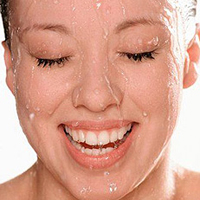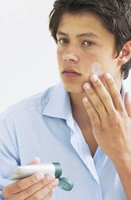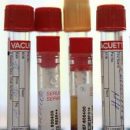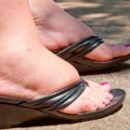Remember how in a wonderful movie «Toy» With Pierre Rishar one of the journalists, President Romboal Koshe dismissed from the editorial office only because he had wet palms? With such a samotor, fortunately, it is necessary to encounter not so often, however, hyperhydrosis, in other words, high sweating, and without inconsistently deliberately.
Content
The origins of the problems of hyperhydrosis
Self
Potting – The process is quite natural: secret sweat
The glands plays a role «Temperature regulator», responsible for maintaining
optimal body temperature. But constantly waving hands, legs,
Middle of the depressions can cause serious
psycho-emotional discomfort, complexes, social disadaptation and
failure in the intimate sphere. What is forcing  glands to produce obviously
glands to produce obviously
Excessive moisture?
First of all, it should be said,
that excessive sweating is primary and secondary. Secondary
hypergidrosis – This is a consequence of some disease, for example,
infectious lesions or endocrine disorders. Naturally, after
their elimination increased sweating disappears by itself. But most often
It is independent, that is, the primary state that
Familiar 5% of all residents of the planet.
Usually
Hyperhydrosis is local: palm, soles (80% of cases) and
axillary (30% of cases). Gypergidrosis is less common
and scalp. It is noted that men and women face
with the problem of increased sweating equally often, and almost half
Patients has a hereditary predisposition.
Primary
hyperhydrosis can manifest itself at any age. Why? Alas, exact
there is still no answer, so it is called essential that
means «Unknown origin». But the mechanism of this phenomenon
It has been well studied.
Schempticking it looks
Approximately like this: the activity of sweat glands, as, however, and all
internal systems of the body, obeys the pulses of the vegetative nervous nervous
Systems. Brain cells receive information from the outside world,
processed it and give the appropriate «Installation» – It became hot,
So sweat glands should be reduced. Allocated with moisture,
evaporating, cools the body.
But with essential
Hyperhydrosis chain gives a failure, and the signals from the nerve centers come
In response to the most unexpected stimuli, which are sometimes no
Relationship to the temperature regime. So enhanced sweat selection can
Become a response to mental excitement, excitement, stress. No less
Significant provoking factors are physical activity,
Taste incentives, hormonal restructuring during pregnancy, after
childbirth, when climax and t.D.
How to cope with hyperhydrosis
Most
familiar and fairly effective means of combating elevated
Pottomination still remain antiperspirants. They reduce
Activity of glands due to salts of aluminum, zinc, zirconium, lead,
Iron, formaldehyde, ethyl alcohol included in their composition. except
Togo, these substances suppress the reproduction of microbes, vital activity
which causes an unpleasant odor. Good antiperspirant
blocks about 40% sweat glands, almost completely eliminating
Visual manifestations of hyperhydroposis.
For removal
Excessive sweating skin in problem areas can be handled
Weak solutions of formalin, glutaraldehyde, aluminum hexachloride,
Tanina. Unfortunately, all these drugs do not give prolonged
effect, and during long-term use can cause irritation and even
Allergic dermatitis. Nevertheless, brief course use them
can.
In the event that the above-mentioned means are not
a lot of facilitates the situation, it is worth thinking about more radical
Measures. Actual methods of treating hyperhydroposis can be divided into two
Categories: locally affecting the problem area and
Corrective work of the vegetative nervous system.
TO
The first definitely refers to the surgical excision of skin sections, on
which concentrated a large amount of sweat glands. This method
Used very limited, mainly in the axillable depression zones.
Unfortunately, with this operation, the risk of forming rough
keloid scars, which often leads to problems much more
serious than sweating.
In the second group
It is worth noting simpatectomy. It involves the destruction of those in
The zone of the vertebral pillar of nerve centers regulating the appropriate
Skin activity. To date, there are several
ways of sympathectomy: open, implying wide access to
sympathetic barrel, endoscopic (it is carried out using
Special tools entered through the puncture) and chemical when
The medicine is injected with a long and thin needle.
Alas,
sympathectomy as any invasive intervention, fraught
Complications. The most harmless of them – Blood vessel injury and,
Accordingly, the formation of hematoma. Much worse damage to the pleural
cavities in which lungs are located. But from compensatory
hyperhydrosis does not guarantee neither the skill of doctors or careful
Compliance with all recommendations in the postoperative period. Simply put,
The body includes other areas of skin, treated zones
remain completely dry, and wet traces appear in the most
unpredictable places, and as a result, it is sometimes necessary to repeat
intervention.
Relatively new treatment method
– Kyuptage sweating zones. According to the technology, it is similar to liposuction: work on
Tissue infiltration passes through a small incision. The main task –
deprive «Office» Small sprigs of vegetative nerves, stopping such
Their effect on the glands. Possible consequences of such a procedure –
skin necrosis, that is, deep abrasions, the occurrence of fibrous fabric
(coarse seals), and post-traumatic pigmentation, which ideally
must pass on themselves in a few weeks, and in violation
Regenerative functions of the dermis require a rather complicated cosmetology
Correction.
It would seem simple and banal
The problem as hyperhydrosis develops into such a problem as neurosis and
Depression, which pulls the whole car problem – Failures B
personal life, failure at work.









